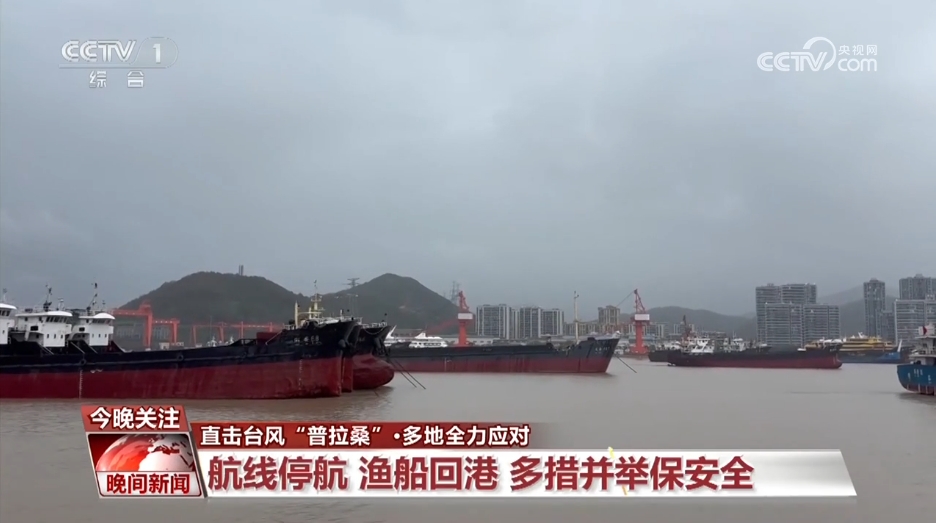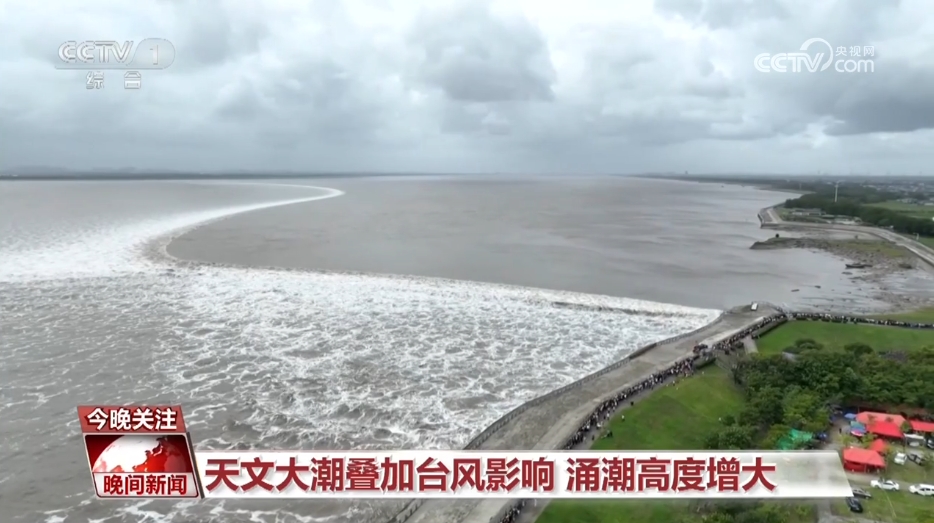CCTV News:Typhoon Prasang, the 14th this year, landed at Daishan, Zhejiang Province at 18: 50 on the 19th. When landing, the maximum wind force near the center is 10 (25 m/s, strong tropical storm level), and it is expected to enter Hangzhou Bay after landing, and land again in the coastal area from Pinghu, Zhejiang to Pudong, Shanghai in the first half of the night, and the intensity gradually weakens. The Central Meteorological Observatory continued to issue yellow warnings for typhoons and rainstorms.
Take measures to ensure the safety of fishing boats returning to Hong Kong when the route is suspended.

Affected by Typhoon Prasang, the winds along the coast of Zhoushan, Zhejiang Province increased during the day on the 19th, and 72 water passenger routes in Zhoushan were suspended. In Linhai City, Zhejiang Province, in order to ensure the safety of fishing boats, the local fishery department has implemented a 24-hour duty system for fishing boat safety monitoring, and 802 fishing boats have berthed in safe waters such as Hongjiaoyan, Jinqing and Jiantiao to take shelter from the wind. Dongtou District, Wenzhou, Zhejiang Province also postponed the fishing in the East China Sea scheduled for September 16th, and all 504 fishing boats took shelter in Hong Kong.
Typhoon affects 10-meter waves. Residents reinforce doors and windows.

In Dongsha Fishing Port, Kanmen, Yuhuan City, Zhejiang Province, strong winds rolled up the sea, and waves washed up on the pedestrian platform and nearby rocks, setting off huge waves more than 10 meters high. In order to prevent typhoons, coastal residents have reinforced their doors and windows as early as two days ago. On the morning of the 19th, firefighters from Yuhuan City Fire Rescue Brigade once again inspected the seaside houses one by one and provided 24-hour emergency service.
The astronomical tide superimposed on typhoon affects the increase of tidal bore height.

Due to the influence of the previous typhoon Bebijia and the new typhoon Prasang, the astronomical tide is superimposed with the storm surge, which makes the arrival time of the tidal bore in Qiantang River this year more uncertain.
Affected by the typhoon, the Central Meteorological Observatory predicts that there will be heavy rains in parts of southeastern Anhui, southern Jiangsu, Shanghai, most of Zhejiang, north-central Jiangxi, northern and eastern Fujian, and south-central Hainan Island from 19th to 20th, and there will be heavy rains in the local area.
Since September, typhoon activities around China have been very active. Is the intensity of the typhoon that landed in China in September stronger than that in the same period of last year? What impact will Typhoon Prasang, which landed today, have on the weather in China? Look at the analysis.